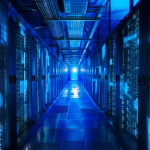As the world becomes increasingly data-driven, the UK water industry is embracing advanced technology to tackle the age-old problem of leaks. With countless miles of piping beneath our feet, detecting and addressing water and gas leaks can be a daunting task. But cutting-edge solutions are revolutionising the way we detect, locate and resolve these issues.
As you read on, you’ll discover what these technologies are, why they’re so important, and how they’re being used to redefine the way we manage the UK’s water systems.
Sujet a lire : How Can Nutrigenomics Influence Personalized Diet Plans in the UK?
Active Acoustic Leak Detection Systems
Overflowing with complexities, the UK’s water network relies heavily on a labyrinth of underground pipes. With the challenge of pinpointing leaks in this vast network, active acoustic leak detection technology emerges as a game-changer.
So, what is active acoustic leak detection? Simply put, it’s the use of sound waves to detect the noise water makes as it escapes from a pipe. Sensors placed at various points along the pipe pick up these sounds and transmit them to a data analysis system. This technology can identify the precise location of a leak, making it easier for remedial action to be taken.
A découvrir également : What Are the Advantages of Fiber Optic Broadband for UK Rural Areas?
These systems are becoming increasingly advanced, with more sensitive sensors and improved data analysis capabilities. They are capable of detecting leaks in a variety of pipe materials, from plastic to iron, and in a range of environments, whether urban or rural. They provide real-time monitoring and allow for early and efficient intervention, minimising water loss and reducing operational costs.
Flowmetry and Pressure-based Leak Detection
Another cornerstone of advanced leak detection is flowmetry and pressure-based technology. These systems monitor the flow of water and pressure within the pipe network. A sudden change in either parameter can indicate a possible leak.
These methods are particularly effective in enclosed systems or pressurised pipes, where the flow and pressure should remain relatively constant. Should deviations occur, the system flags the area for further investigation.
A key advantage of flowmetry and pressure-based systems is their ability to detect slow leaks. These ‘silent’ leaks may go unnoticed by acoustic systems, but over time can lead to significant water loss. By coupling flowmetry with other leak detection technologies, utility companies can create a powerful, multi-layered approach to water management.
Gas Tracing Technologies
In some situations, the best way to detect a water leak is with gas. Gas tracing technologies, though not new, have been refined and improved over recent years. These systems work by injecting a tracer gas, such as hydrogen, into the water system. The gas, being lighter than water, rises to the surface where it can be detected by handheld sensors.
Gas tracing is a non-invasive method of leak detection, making it ideal for use in sensitive environments. It’s particularly useful for detecting leaks in non-metallic pipes, where acoustic systems may struggle. While it might not be the first line of defence, gas tracing has an important role to play in advanced leak detection.
Advanced Data Analysis Systems
While the hardware for detecting leaks is vital, it’s the software that truly makes these systems advanced. Data analysis systems take the information gathered by sensors and turn it into actionable insights. These complex algorithms can predict where leaks are likely to occur, allowing for preventative measures to take place.
These systems are capable of managing vast amounts of data, analysing patterns, identifying anomalies, and generating detailed reports. This can help to allocate resources more efficiently, prioritise repair work, and ultimately save water. And as artificial intelligence becomes more sophisticated, so too will these data analysis systems.
Satellite and Drone-based Leak Detection
The future of leak detection technology may well be in the sky. Satellite and drone-based systems are being developed to provide aerial surveys of water networks. These technologies use thermal imaging and hyperspectral imaging to detect changes in the ground temperature and vegetation health, which can indicate a leak.
These systems can cover large areas quickly and provide a bird’s-eye view of the network. They are particularly beneficial in rural areas, where ground-based sensors may be less effective. While still in their infancy, satellite and drone-based leak detection technologies hold great promise for the future.
Across the UK, these advanced technologies are being deployed to tackle the issue of water leakages. By using intelligent data systems in conjunction with acoustic, flowmetry, gas tracing and even aerial methods, utilities can now detect and address leaks with unprecedented accuracy and efficiency. As technology continues to evolve, the industry will undoubtedly uncover even more innovative solutions to preserve our precious water resources.
Leak Location with Moisture Meters
Moisture meters are a widely used detection method in the UK water industry. These devices are utilised for measuring the moisture content in a given area, providing a highly effective way of identifying the presence of a leak. More advanced systems are equipped with infrared moisture meters to further enhance detection capabilities.
The way moisture meters function is simple yet highly effective. By detecting changes in moisture levels, they can indicate the presence of a leak. Changes could be due to seepage from a leaky pipe or even from condensation caused by a nearby gas leak. This gives technicians a clear sign that further investigation is needed in a specific area.
The beauty of moisture meters is that they provide real-time data. This allows water utilities to react swiftly, reducing the amount of water lost through leaks. Furthermore, the use of infrared technology allows for the detection of leaks that are hidden behind walls or buried underground.
Being versatile, moisture meters are instrumental in leak detection across a broad range of environments. Whether it’s in the bustling streets of London or the serene countrysides of Scotland, they have proven to be an indispensable tool in water management. Moreover, the continual development of moisture meter technology ensures enhanced leak location accuracy, making them an integral part of advanced leak detection methods.
Machine Learning in Leak Detection
As we move deeper into the era of digital transformation, machine learning is becoming an increasingly relevant tool in leak detection. This powerful technology is capable of processing and analysing massive amounts of data, making it an ideal complement to other detection systems.
Machine learning algorithms are designed to learn and improve from the data they process. In the context of leak detection, they can identify patterns in data collected from sensors, including acoustic leak detectors, tracer gas systems, and moisture meters. Over time, these algorithms can predict potential leak locations, enabling water utilities to take preventative action.
As part of advanced data analysis systems, machine learning offers a dynamic approach to managing the UK’s water networks. Its ability to analyse real-time data from multiple sources allows for more efficient resource allocation and prioritisation of repair work. This not only saves costs but also significantly reduces water loss.
Moreover, machine learning can also play a crucial role in the development of new detection methods. For instance, it can help improve the precision of satellite leak detection systems by analysing patterns in thermal imaging data.
Conclusion
The UK water industry is continuing to embrace and adopt advanced technologies to tackle the ongoing challenge of water leaks. As discussed, these encompass a broad array of methods, from active acoustic systems, flowmetry and pressure-based techniques, gas tracing technologies, advanced data analysis with machine learning, moisture meters, and innovative satellite and drone-based detection systems.
Each of these technologies holds its unique benefits and applications, but all contribute to a more efficient and effective water management system. The use of these advanced leak detection technologies not only allows for more accurate leak location but also facilitates timely intervention, which ultimately minimises water loss and operational costs.
Moving forward, the water industry’s future seems promising as it continues to leverage these advanced solutions. As technology evolves, so too will the ways we detect and address leaks in our water systems. By integrating these technologies and continually innovating, we can better manage our water resources and ensure a sustainable future for all.






